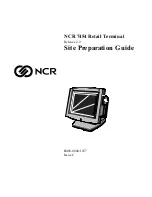
6. HX3040 Redundancy
302
These commands will only be triggered if the Active CPU is operating with redundancy disarmed,
i.e. another CPU must be in the Inactive State (or out of the bus). Otherwise, a blocking message
appears:
"The Login cannot be performed, because the current project is different from the project in use on
the CPU. If you really want to perform this operation, configure another CPU to the inactive state
and then rerun this command”
Blocking of Operations in non-Active CPU
In some circumstances, certain operations are locked in non-active CPU. If another CPU is in the
active state, which is usual in the case of redundancy, certain operations are blocked on non-active
CPU:
Offline and online load
Switch application state (RUN/STOP)
Debug/Stop
Debug/New Breakpoint
When there is an attempt of executing a command of this type, the MasterTool sends the following
message:
"This operation can only be performed on another CPU, because it is controlling the process."
On the other hand, it is possible to login on non-active CPU to monitor or force non-redundant
variables.
Interaction with the redundancy through the HX3040 CPU graphics display
The redundancy state and menu available operations can be accessed on the HX3040 CPU display.
CPU Redundancy State
The CPU redundancy state, described in Redundant CPU States, is seen in the three characters that
start from the second row of the main screen, as shown in the chapter Maintenance – Graphic
Display. The screen is presented after the initialization of the CPU, and a few seconds after any
navigation (without pushing the HX3040 CPU button).
Screens Below the Redundancy Menu
There is a menu called REDUNDANCY, below which there are some screens. The description and
access to screens of redundancy are available in chapter Informative Menu and of CPU’s
Configuration.
Redundancy Diagnostics Structure
The redundancy diagnostics area corresponds to the DG_HX3040_01 symbolic variable, allocated
automatically by MasterTool on GVL System_Diagnostics.
This area is divided into six other data structures:
o
RedDgnLoc: contains local CPU redundancy diagnostics (where the MasterTool is
connected), as for example, the CPU redundancy state. This section is described in
Redundancy Diagnostics.
o
RedDgnRem: is a copy of RedDgnLoc from another CPU, received via sync channels. In this
way, the CPU has access to remote CPU diagnostics. This section is described in
Redundancy Diagnostics.
o
RedCmdLoc: contains redundancy commands generated on this CPU (local), for example,
from a SCADA system, or generated in POUs of this CPU (ex: UserPrg or NonSkippedPrg).
This section is described in Redundancy Commands.
o
RedCmdRem: this is a copy of RedCmdLoc from another CPU (remote), received via sync
channels. This section is described in Redundancy Commands.
















































